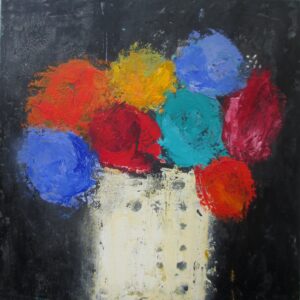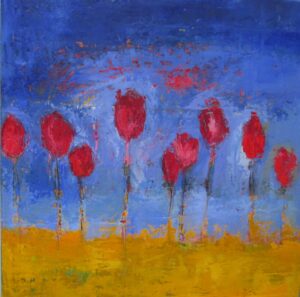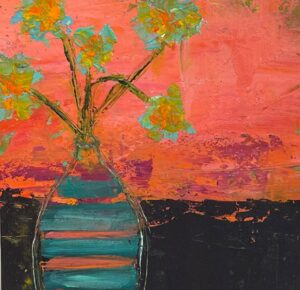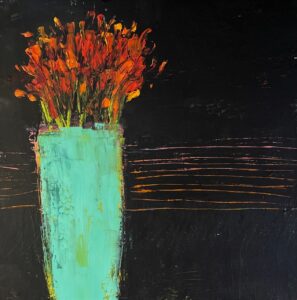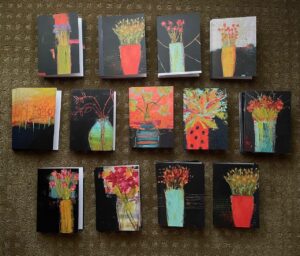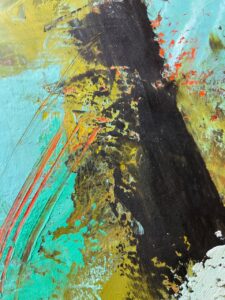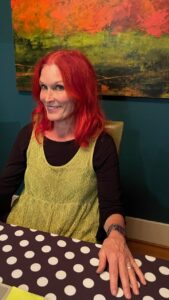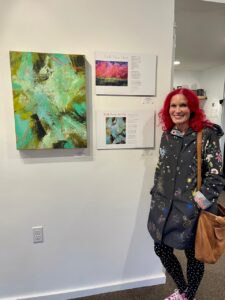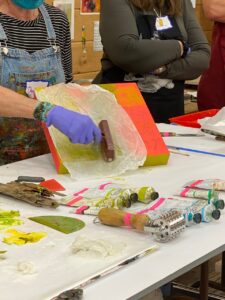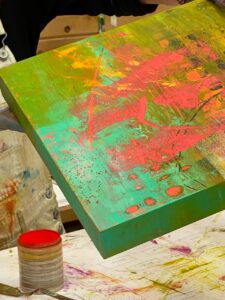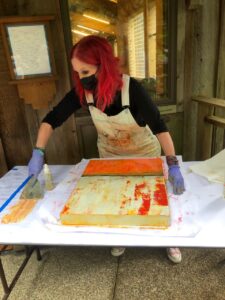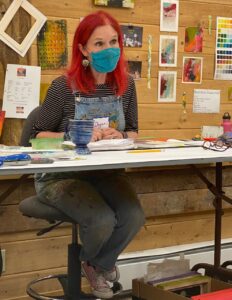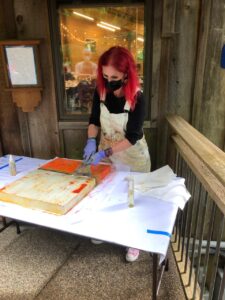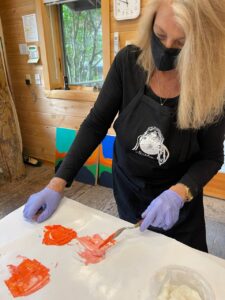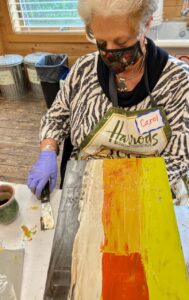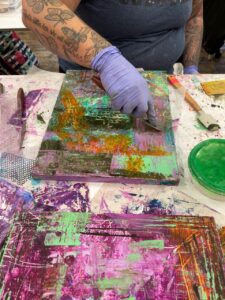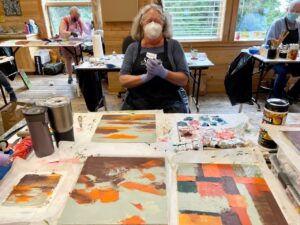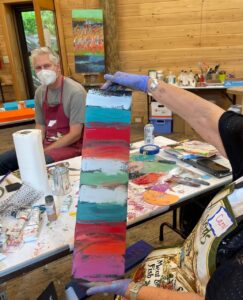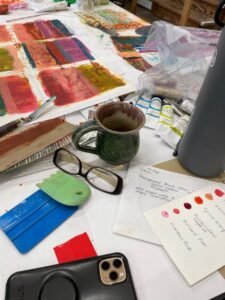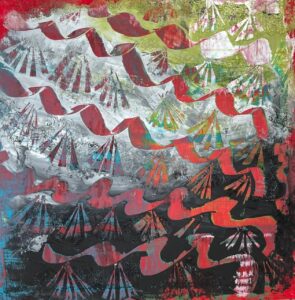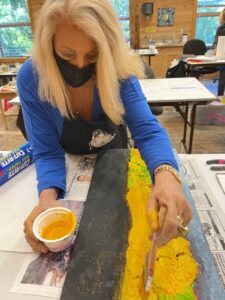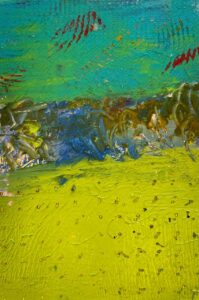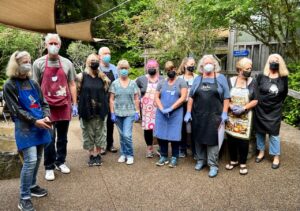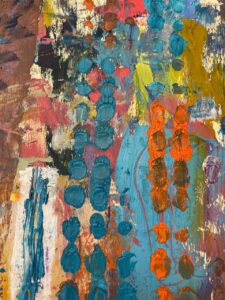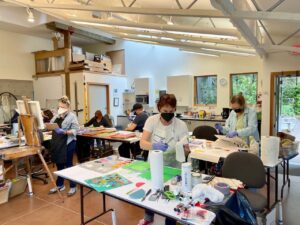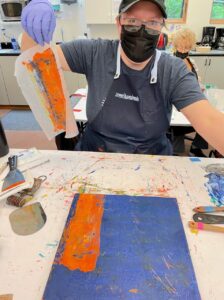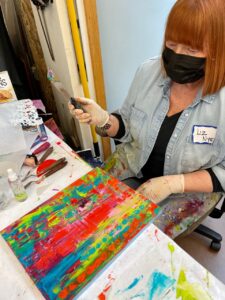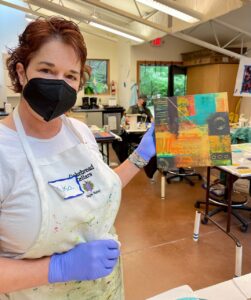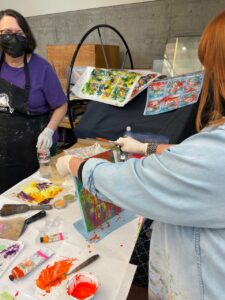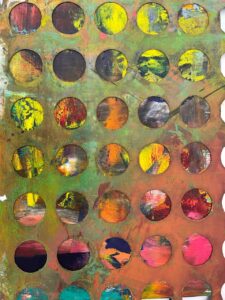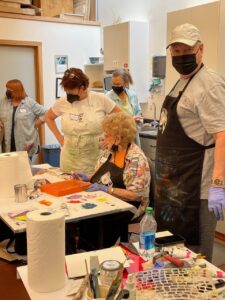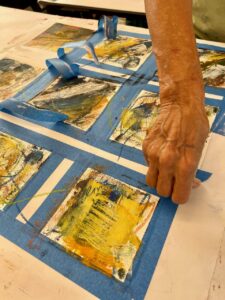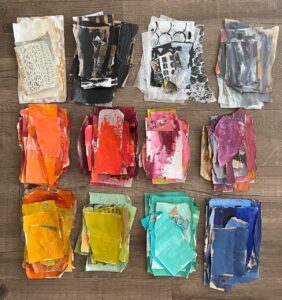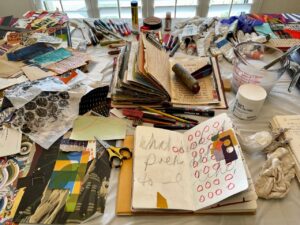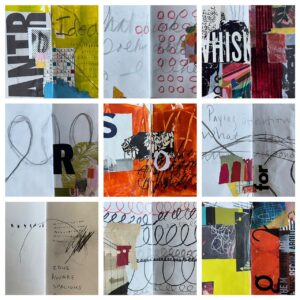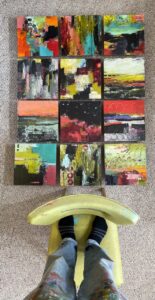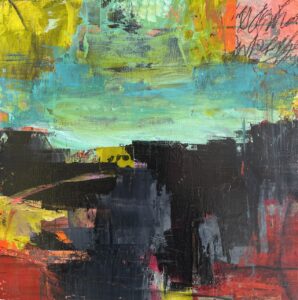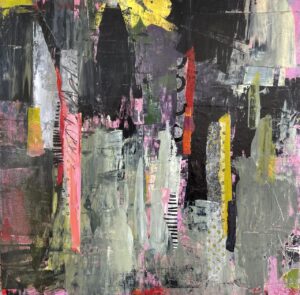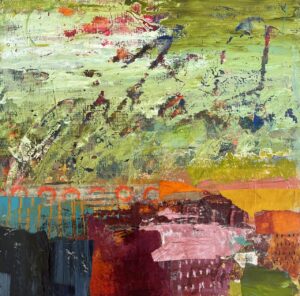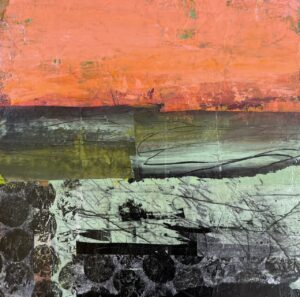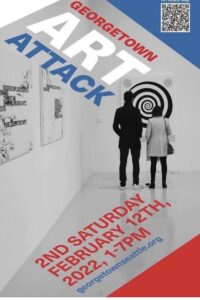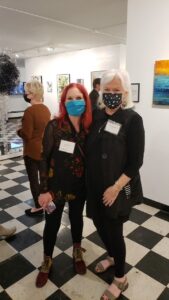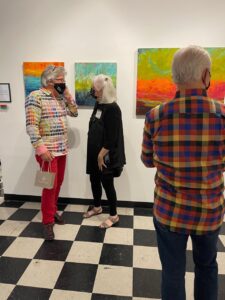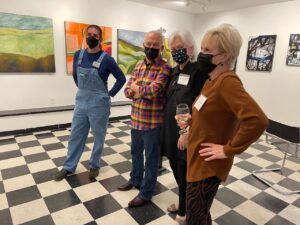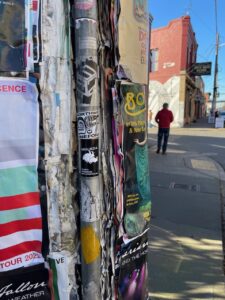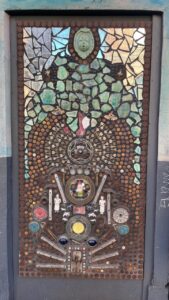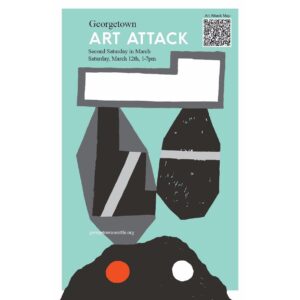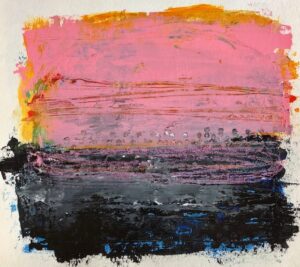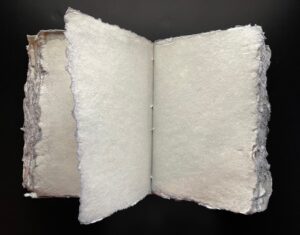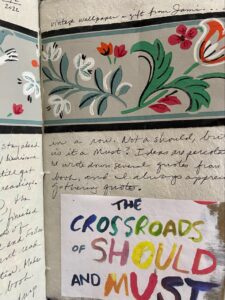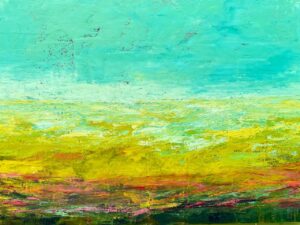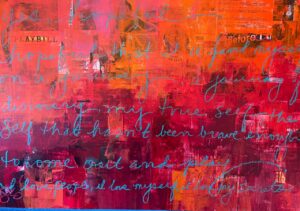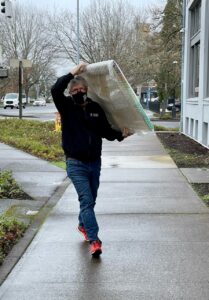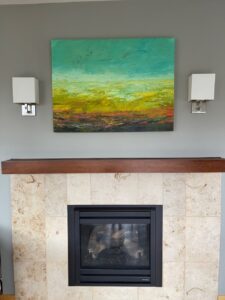
I love having a daily art project, something quick and easy and not too complicated. Having this type of project gets me into my studio, even on days when I only have a little bit of time or when I’m not feeling like painting or doing something big. Last year I kept a daily journal where I filled the pages with words, collages, and small paintings. One year I did a painting a day in a series of spiral bound journals. For this year, I am creating a collage each day and I have titled my project Lexicon of Collage. For my substrate, I am using matboard cut into 4×6 inch pieces (I ordered the matboard in a size of my choosing from Matboard and More, a company I have used for a lot of projects over the years).
For most of the collages I make, I use pieces of my hand painted papers, which I create using acrylic paint on various papers, i.e., drawing, deli, tissue, and paper bags. I divide these papers by color, making it easy to find just what I need.



When I’m ready to create a collage, I reach for my painted papers, text and typography, bits of ephemera, scraps from old books, and random pieces of collected papers. I audition the papers and when I have a composition I like, I start gluing using Golden semi-gloss soft gel medium.
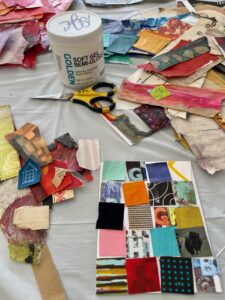
Once I have glued down my collage material, I place a piece of wax paper over the collage and then a stack of heavy books on top (or a bag of rice), and let it dry for several hours (or overnight). Once the glue is set, I often have raggedy edges that I like to trim using an Xacto knife. Once the collages are trimmed, I apply a thin coat of Golden’s semi-gloss soft gel medium, the same medium I use for gluing the papers.
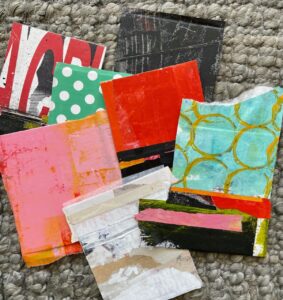



There are several benefits to having a daily project. As I mentioned above, this type of project gets me into my studio. But even more than propelling me to make art daily, it pushes me to experiment and play with a variety of compositions, unusual color combinations, and ways to create little pieces of art that hopefully take my breath away, that cause a gasp of delight, all the things that I want to happen in my bigger paintings. A bonus: I have already used some of my collages as inspirations for my paintings.





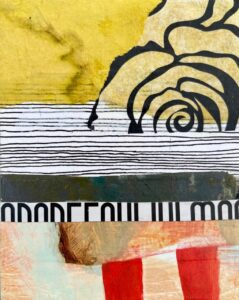



Another fun addition to this project is how I share my completed collages. About once a week, give or take, I share a grouping of collages I have created. I started inviting friends (and family) to be my guest collage flippers. I videotape my invited collage flipper and share the videos on Instagram. Here are some of my invited flippers.
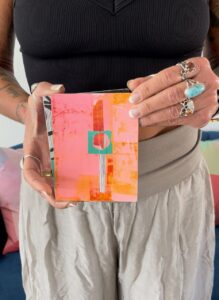





For more regular updates on this project, follow on me on Instagram where I regularly post videos of my guest collage flippers and/or sign up for my monthly newsletter, where I do periodic updates about my Lexicon of Collage project.




